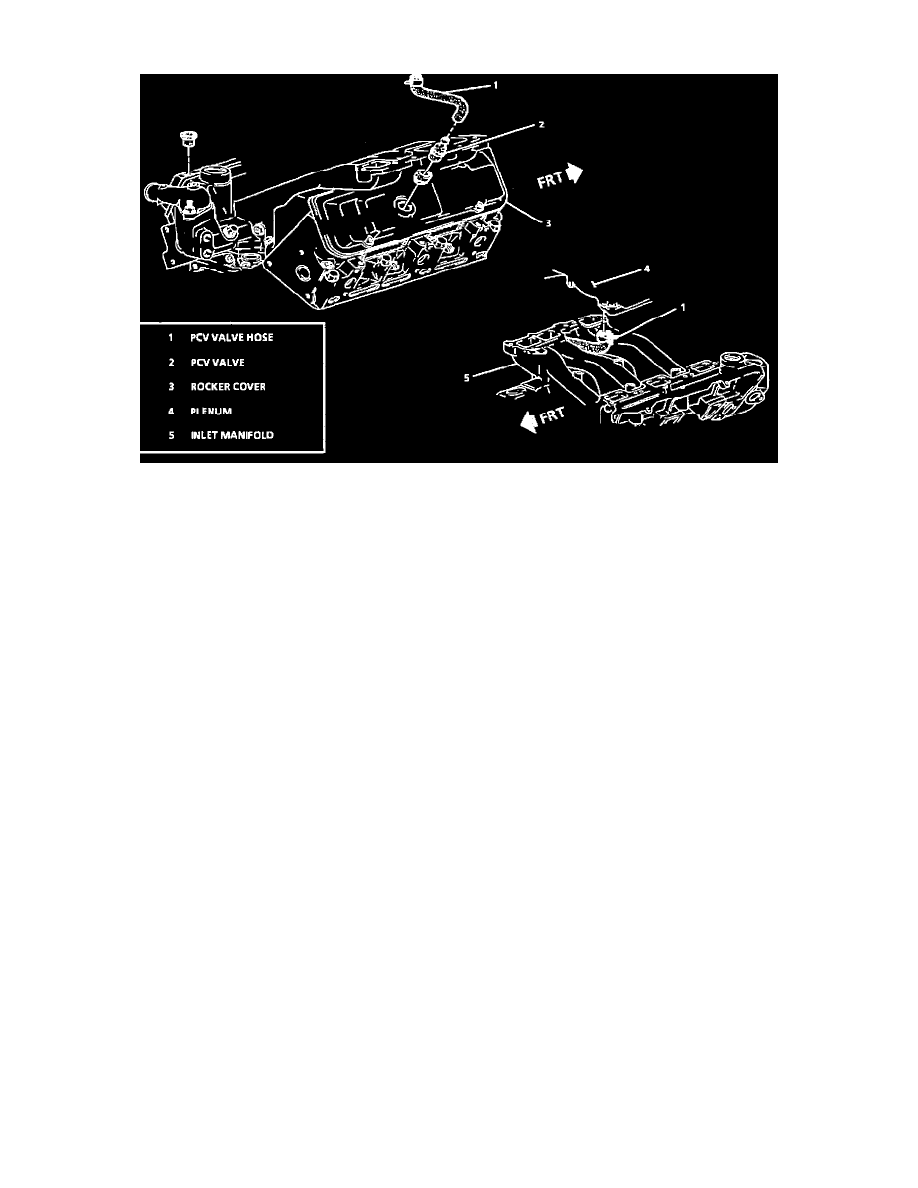Cutlass Ciera Cruiser V6-3300 3.3L MFI VIN N (1993)

Positive Crankcase Ventilation: Testing and Inspection
PCV Valve Location
TEST DESCRIPTION:
This test is to see if the PCV system is functioning properly.
1.
Check for a correct PCV valve and a properly mounted valve into the rubber grommet. Make sure the hose(s) and clamp(s) are tight, and in place.
2.
Start the engine, and let idle.
3.
Remove PCV valve from valve cover, and place thumb over valve.
4.
Engine speed should drop, and vacuum should be felt.
5.
If no vacuum is present, check for a clogged PCV valve, hose, or intake manifold port.
6.
Remove engine oil dipstick and install a vacuum gauge on dipstick tube.
7.
Run the engine at 1500 rpm for 30 seconds, and then take a vacuum gauge reading at that same engine speed. If vacuum is present, then system is
OK. If no vacuum is present, the engine may not be sealed and/or drawing in outside air. If pressure registers on the gauge, check for a plugged
hose or excessive engine blow-by.
8.
Turn the engine "OFF," and remove the PCV valve from hose. Shake the PCV valve and listen for a rattle. If a rattle was not heard, replace the
valve.
INCORRECT OPERATION MAY CAUSE:
1.
A plugged oil/air separator or hose may cause:
^
Oil leaks due to high crankcase pressure.
^
Sludge in the engine due to inadequate scavenging of crankcase vapors.
2.
A leaking oil/air separator or hose could cause:
^
High idle speed due to a vacuum leak.
^
Oil leaks from the separator or hose.
